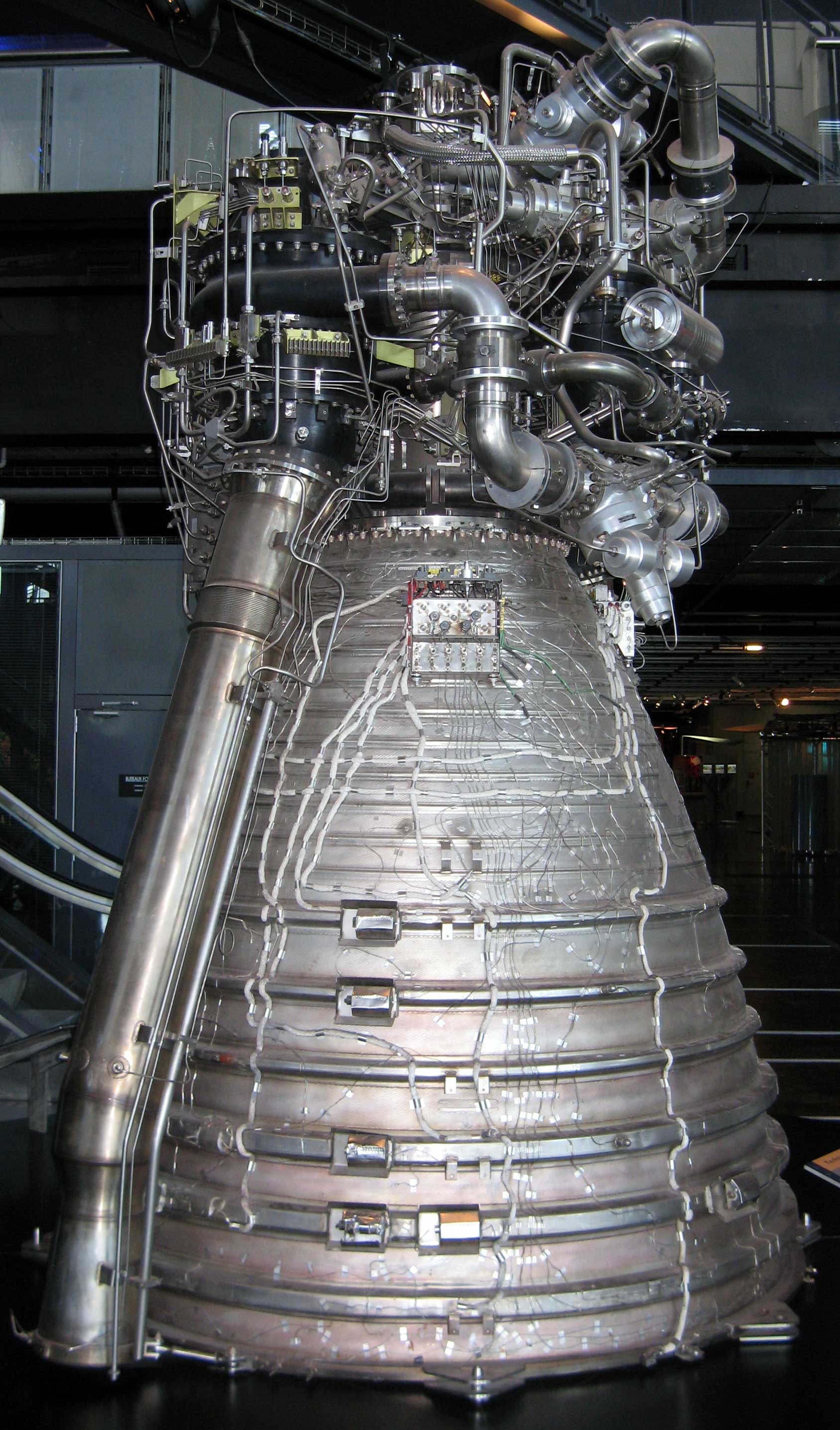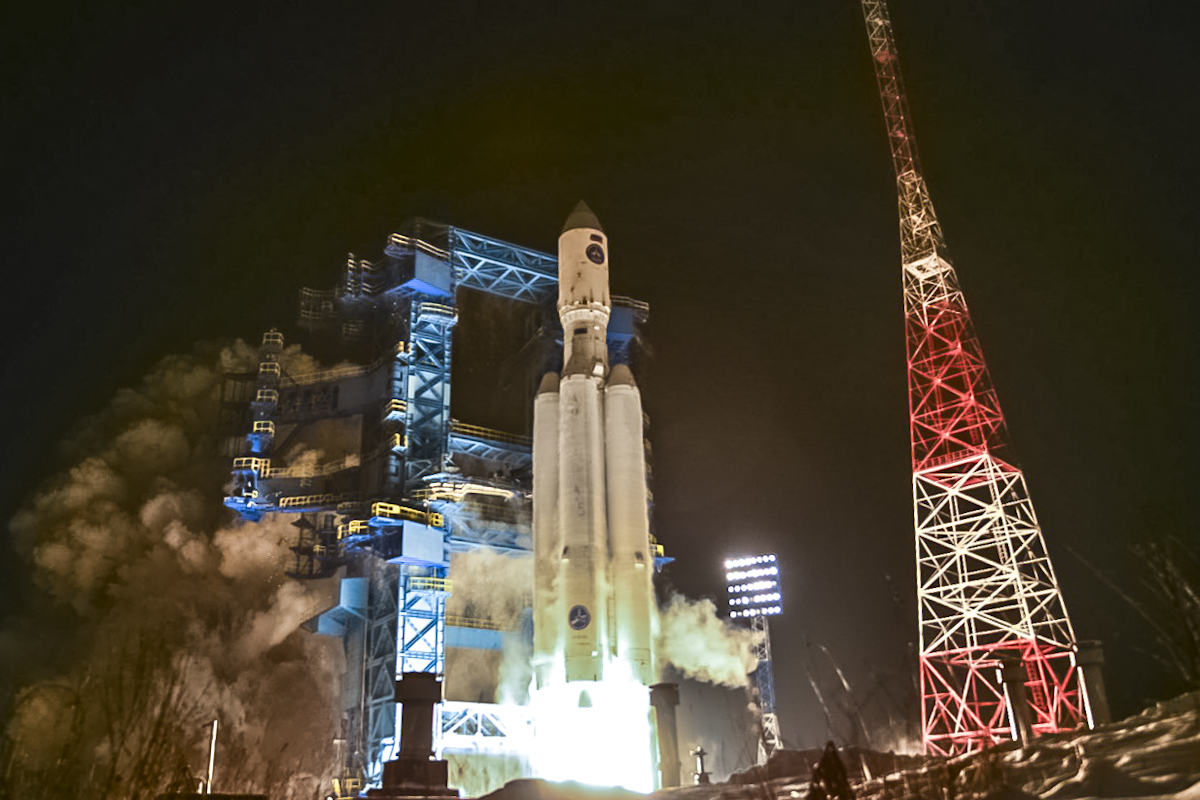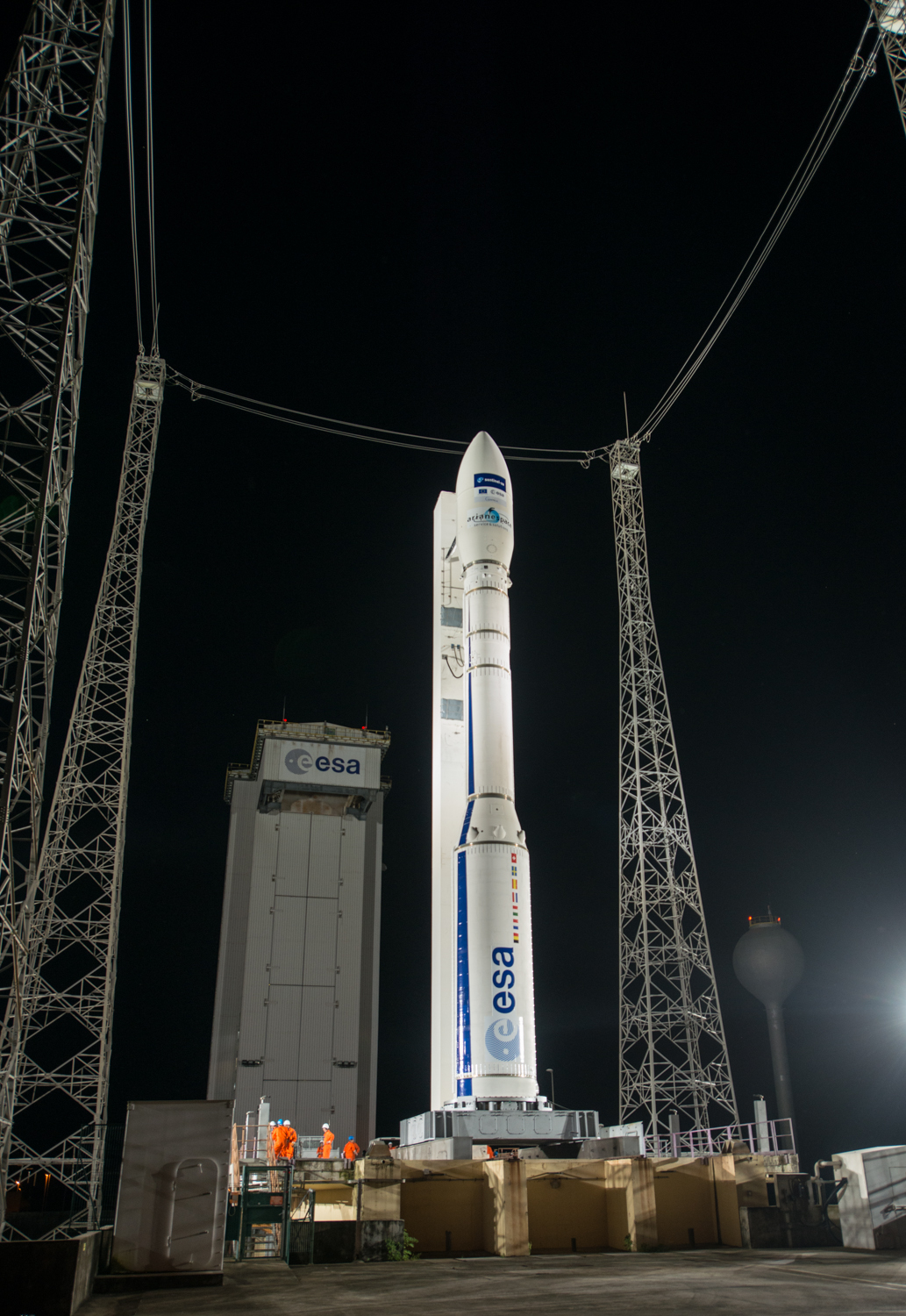|
RD-0146
The RD-0146 (РД-0146, Ракетный Двигатель-0146, Rocket Engine-0146) is a liquid-fuel cryogenic rocket engine developed by KBKhA Kosberg in Voronezh, Russia. The RD-0146 is the first Russian rocket engine to burn liquid oxygen and liquid hydrogen in the expander cycle, in which turbopumps are driven by waste heat absorbed in the nozzle and combustion chamber. The RD-0146 featured the fastest-spinning turbopump of any serially produced rocket engine: the fuel turbopump spun at over 120,000 rpm.The RD-0146M variant uses liquified natural gas as a fuel instead of hydrogen, while the RD-0146D variant is projected to produce specific impulse (''Isp)'' as high as in a vacuum. The engine has been proposed for use on multiple carrier rockets throughout its history. RD-0146 variants were, at various times, selected to power new upper stages for Proton, Angara, Onega (a development of Soyuz-2), and Rus-M. As of 2022, the RD-0146D is in development for use on the K ... [...More Info...] [...Related Items...] OR: [Wikipedia] [Google] [Baidu] |
KBKhA
Chemical Automatics Design Bureau (CADB), also KB Khimavtomatika (russian: Конструкторское бюро химавтоматики, КБХА, KBKhA), is a Russian design bureau founded by the NKAP (People's Commissariat of the Aircraft Industry) in 1941 and led by Semyon Kosberg until his death in 1965. Its origin dates back to a 1940 Moscow carburetor factory, evacuated to Berdsk in 1941, and then relocated to Voronezh city in 1945, where it now operates. Originally designated OKB-296 and tasked to develop fuel equipment for aviation engines, it was redesignated OKB-154 in 1946. In 1965 took over leadership. He was succeeded by in 1993, then by (RD-0124 Chief designer) in 2015. During this time the company designed a wide range of high technology products, including liquid propellant rocket engines, a nuclear reactor for space use, the first Soviet laser with an output of 1 MW and the USSR's only operational nuclear rocket engine. The company has designed more tha ... [...More Info...] [...Related Items...] OR: [Wikipedia] [Google] [Baidu] |
Chemical Automatics Design Bureau
Chemical Automatics Design Bureau (CADB), also KB Khimavtomatika (russian: Конструкторское бюро химавтоматики, КБХА, KBKhA), is a Russian OKB, design bureau founded by the NKAP (People's Commissariat of the Aircraft Industry) in 1941 and led by Semyon Kosberg until his death in 1965. Its origin dates back to a 1940 Moscow carburetor factory, evacuated to Berdsk in 1941, and then relocated to Voronezh city in 1945, where it now operates. Originally designated OKB-296 and tasked to develop fuel equipment for aviation engines, it was redesignated OKB-154 in 1946. In 1965 took over leadership. He was succeeded by in 1993, then by (RD-0124 Chief designer) in 2015. During this time the company designed a wide range of high technology products, including liquid propellant rocket engines, a nuclear reactor for space use, the first Soviet laser with an output of 1 MW and the USSR's only operational nuclear rocket engine. The company has designed mor ... [...More Info...] [...Related Items...] OR: [Wikipedia] [Google] [Baidu] |
M10 (rocket Engine)
M10 is a liquid-fuel upper-stage rocket engine by Avio on behalf of European Space Agency for use on Vega E. The engine, initially known as ''LM10-MIRA'', was a derivation of the existing Russian RD-0146 engine and result of a past collaboration between ''Avio'' and Chemical Automatics Design Bureau (KBKhA) ended in 2014 after the escalation of the Russo-Ukrainian conflict and consequent economic sanctions. On May 6, 2022 engine testing campaign started at Salto di Quirra, Sardinia, with consequent maiden flight on a Vega-E launcher expected by 2026 from Guiana Space Centre. Overview The M10 engine is the first operational European methane rocket engine, conceived for use on upper stages of future ''Vega-E'' and ''Vega-E Light'' launchers, in which will replace both the solid-fueled Zefiro 3rd stage and hydrazine-fueled AVUM 4th upper stage. An industrial team directed by ''Avio'' with companies of Austria, Belgium, France, Czech Republic, Romania and Switzerland will manu ... [...More Info...] [...Related Items...] OR: [Wikipedia] [Google] [Baidu] |
Rus-M
Rus-M (russian: Русь-М) was a proposed launcher design which was intended to become Russia's main launch vehicle for crewed spaceflight after 2018, and an integral part of the Orel spacecraft being developed to replace the Soyuz. Rus-M was being developed by TsSKB-Progress, beginning in 2009. The program was halted in October 2011, restarted in 2012 and finally cancelled in August 2015. History In 2009, Roscomos published the specifications for a Rus-M launch vehicle. Several variants of the Rus-M were later proposed, creating a family of similar launch vehicles. In spring of 2009, TsSKB-Progress won a government contract to develop a new launcher for Russia's human space program. The project was featured in MAKS 2009 Airshow, and preliminary design of the vehicle was expected to be submitted to the Russian space agency Roscosmos by August 2010. Requirements Safety requirements put forward by Roscosmos emphasized that the launcher design is to be extremely reliable; saf ... [...More Info...] [...Related Items...] OR: [Wikipedia] [Google] [Baidu] |
KVTK (rocket Stage)
The KVTK (russian: Кислородно-водородный тяжёлого класса, Oxygen/Hydrogen Heavy Class) is a liquid oxygen/hydrogen upper stage for high energy orbits that is currently under development. The KVTK contains an RD-0146D engine and is designed for use on Angara rockets. KVTK would be the first hydrogen-powered upper stage for use on a Russian launch vehicle, although Khrunichev has previously produced a hydrogen-powered upper stage (KVD-1) for the Indian GSLV. KVTK is designed to provide up to five ignitions, allowing for complex orbital maneuvering, and have an on-orbit lifespan of up to nine hours. KVTK would allow an increase in payload to GTO of 20-50% compared to the Angara A5's standard Briz-M upper stage, powered by UDMH and N2O4. History The KVTK was originally studied as an upper stage for the Energia family of rockets, but in 1987 was superseded by the RCS stage (Retro and Corrections Stage), based loosely on the American S-IVB. In 1996, ... [...More Info...] [...Related Items...] OR: [Wikipedia] [Google] [Baidu] |
Expander Cycle (rocket)
The expander cycle is a power cycle of a bipropellant rocket engine. In this cycle, the fuel is used to cool the engine's combustion chamber, picking up heat and changing phase. The now heated and gaseous fuel then powers the turbine that drives the engine's fuel and oxidizer pumps before being injected into the combustion chamber and burned. Because of the necessary phase change, the expander cycle is thrust limited by the square–cube law. When a bell-shaped nozzle is scaled, the nozzle surface area with which to heat the fuel increases as the square of the radius, but the volume of fuel to be heated increases as the cube of the radius. Thus beyond approximately 300 kN (70,000 lbf) of thrust, there is no longer enough nozzle area to heat enough fuel to drive the turbines and hence the fuel pumps. Higher thrust levels can be achieved using a bypass expander cycle where a portion of the fuel bypasses the turbine and or thrust chamber cooling passages and goes directly to the ma ... [...More Info...] [...Related Items...] OR: [Wikipedia] [Google] [Baidu] |
Cryogenic Rocket Engine
A cryogenic rocket engine is a rocket engine that uses a cryogenic fuel and oxidizer; that is, both its fuel and oxidizer are gases which have been liquefied and are stored at very low temperatures. These highly efficient engines were first flown on the US Atlas-Centaur and were one of the main factors of NASA's success in reaching the Moon by the Saturn V rocket. Rocket engines burning cryogenic propellants remain in use today on high performance upper stages and boosters. Upper stages are numerous. Boosters include ESA's Ariane 5, JAXA's H-II, and the United States Delta IV and Space Launch System. The United States, Russia, Japan, India, France and China China, officially the People's Republic of China (PRC), is a country in East Asia. It is the world's most populous country, with a population exceeding 1.4 billion, slightly ahead of India. China spans the equivalent of five time zones and ... are the only countries that have operational cryogenic rocket engines ... [...More Info...] [...Related Items...] OR: [Wikipedia] [Google] [Baidu] |
Angara (rocket Family)
The Angara rocket family (Russian: Ангара) is a family of launch vehicles being developed by the Moscow-based Khrunichev State Research and Production Space Center. The launch vehicles are to put between and into low Earth orbit and are intended, along with Soyuz-2 variants, to replace several existing launch vehicles. History After the dissolution of the Soviet Union, many formerly Soviet launch vehicles were built in or required components from companies now located in Ukraine, such as Yuzhnoye Design Bureau, which produced Zenit-2, and Yuzhmash, which produced Dnepr and Tsyklon. Additionally, the Soviet Union's main spaceport, Baikonur Cosmodrome, was located in Kazakhstan, and Russia encountered difficulties negotiating for its use. This led to the decision in 1992 to develop a new entirely Russian launch vehicle, named Angara, to replace the launch vehicles now built outside of the country, and ensure Russian access to space without Baikonur. It was decided that ... [...More Info...] [...Related Items...] OR: [Wikipedia] [Google] [Baidu] |
Russia
Russia (, , ), or the Russian Federation, is a List of transcontinental countries, transcontinental country spanning Eastern Europe and North Asia, Northern Asia. It is the List of countries and dependencies by area, largest country in the world, with its internationally recognised territory covering , and encompassing one-eighth of Earth's inhabitable landmass. Russia extends across Time in Russia, eleven time zones and shares Borders of Russia, land boundaries with fourteen countries, more than List of countries and territories by land borders, any other country but China. It is the List of countries and dependencies by population, world's ninth-most populous country and List of European countries by population, Europe's most populous country, with a population of 146 million people. The country's capital and List of cities and towns in Russia by population, largest city is Moscow, the List of European cities by population within city limits, largest city entirely within E ... [...More Info...] [...Related Items...] OR: [Wikipedia] [Google] [Baidu] |
Известия
''Izvestia'' ( rus, Известия, p=ɪzˈvʲesʲtʲɪjə, "The News") is a daily broadsheet newspaper in Russia. Founded in 1917, it was a newspaper of record in the Soviet Union until the Soviet Union's dissolution in 1991, and describes itself now as a "national newspaper" of Russia. The word ''izvestiya'' in Russian means "bring news" or "tidings", "herald" (an official messenger bringing news), derived from the verb ''izveshchat'' ("to inform", "to notify"). Origin The newspaper began as the ''News of the Petrograd Soviet of Workers Deputies'' on in Petrograd. Initially, the paper expressed Menshevik and Socialist-Revolutionary Party views. In August 1917, it took the title ''News of the Central Executive Committee of the Petrograd Soviet of Workers' and Soldiers' Deputies''. By October 1917 it became ''News of the Central Executive Committee of the Soviets of Working and Military Deputies'', and was eventually re-titled ''News of the Soviets of People's Deputies ... [...More Info...] [...Related Items...] OR: [Wikipedia] [Google] [Baidu] |
Gas Generator
A gas generator is a device for generating gas. A gas generator may create gas by a chemical reaction or from a solid or liquid source, when storing a pressurized gas is undesirable or impractical. The term often refers to a device that uses a rocket propellant to generate large quantities of gas. The gas is typically used to drive a turbine rather than to provide thrust as in a rocket engine. Gas generators of this type are used to power turbopumps in rocket engines, in a gas-generator cycle. It is also used by some auxiliary power units to power electric generators and hydraulic pumps. Another common use of the term is in the industrial gases industry, where gas generators are used to produce gaseous chemicals for sale. For example, the chemical oxygen generator, which delivers breathable oxygen at a controlled rate over a prolonged period. During World War II, portable gas generators that converted coke to producer gas were used to power vehicles as a way of alleviat ... [...More Info...] [...Related Items...] OR: [Wikipedia] [Google] [Baidu] |
Avio
Avio S.p.A. is an Italian company operating in the aerospace sector with its head office in Colleferro near Rome, Italy. Founded in 1908, it is present in Italy and abroad with different commercial offices and 10 production sites. Avio operates in: *solid-propellant motors for space and tactical propulsion *electronic/electrical control and automation systems Avio is Prime Contractor for the new European launcher Vega and sub-contractor for the Ariane program, both financed by the European Space Agency (ESA) The company is active in the field of technological research. It carries out projects in collaboration with 14 Italian and 10 foreign universities and research centres, which are aimed at the continuous improvement of product and process technologies. It also undertakes the research of solutions in order to reduce the environmental impact of aircraft engines, in conformity with the objectives of consumption and emissions reduction dictated, within the European area, by the ... [...More Info...] [...Related Items...] OR: [Wikipedia] [Google] [Baidu] |



